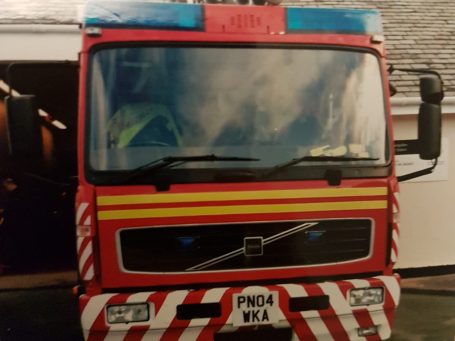Unregulated Children’s Homes: Why Staff Training Matters
I’m currently on day two of a five-day “Team Teach” trainers course, focusing on conflict management, de-escalation, and therapeutic approaches. Even at this early stage, it’s already got me thinking about the importance of proper training in care settings—especially with the recent spotlight on unregulated children’s homes in the UK. I’ve also had some interesting discussions with other care professionals about the challenges these homes face and how we can do better.
Unregulated homes, often used for teenagers with complex needs, don’t have to meet the same standards as regulated children’s homes. One major concern is the lack of mandatory training for staff. Without proper support or guidance, staff in these settings are left to navigate extremely challenging situations, often without the tools or skills they need.
Training That Makes a Difference
One thing that’s already clear from this week is that training shouldn’t just be a tick-box exercise. It’s not about sitting through a course and ticking off compliance requirements. Meaningful training equips staff to feel confident and capable in their roles, and when that happens, the impact on young people can be life-changing.
Well-trained teams are better equipped to:
- Understand trauma: Recognising how past experiences shape a child’s behavior is vital for building trust and connection.
- Handle challenging situations calmly: Techniques like de-escalation help prevent situations from escalating, keeping everyone safe and supported.
- Keep young people safe: Safeguarding isn’t just about policy—it’s about practice. Proper training ensures staff know how to identify and respond to risks effectively.
- Support growth and independence. With the right knowledge, staff can guide young people to build resilience and prepare for the future.
The Problem with Unregulated Homes
Unfortunately, unregulated homes often lack the structured training programs required in regulated settings. This can lead to inconsistent care and poorer outcomes for the young people who live there. It’s deeply concerning because the potential for positive change is right in front of us—we just need to prioritise it.
A Step Towards Better Outcomes
At RiCo Training LTD, we’re passionate about delivering meaningful training that makes a real difference. Whether it’s trauma-informed care, therapeutic parenting, or safeguarding, our goal is to ensure that every staff member feels prepared to support the young people in their care.
Unregulated children’s homes may be a growing issue, but investing in proper training can help bridge the gap. When staff are equipped with the right skills, it creates a safer, more supportive environment—and that’s something every young person deserves.
If you’re as passionate about this as I am, or if you’d like to explore training options for your team, let’s chat. Together, we can work towards better care and brighter futures for the young people who rely on us.

19.11.24
18
June
2024
Fire Safety in Care Homes – Lessons from the Past and a Call for Action
Ensuring fire safety in care homes is critical, particularly given the vulnerability of residents. Two tragedies—the Rosepark Care Home fire in 2004 and the Grenfell Tower fire in 2017—highlight the consequences of inadequate fire safety measures and have shaped current fire safety regulations.
Lessons from Rosepark and Grenfell
The Rosepark fire in Glasgow claimed 14 lives, largely due to failures in fire safety protocols, including poor evacuation planning and fire door misuse. It underscored the importance of thorough risk assessments and staff training, leading to stricter guidelines for care homes.
The Grenfell Tower fire, which caused 72 fatalities, revealed systemic flaws in fire safety compliance, particularly around cladding materials and building evacuation strategies. The inquiry brought significant changes, such as the ban on combustible cladding and updates to Approved Document B of the Building Regulations. This document now emphasizes safer materials and mandates clear evacuation strategies for vulnerable groups, directly impacting care home designs and operations.
Recent Fire Safety Changes
The Fire Safety Act 2021 and Building Safety Act 2022 further tightened responsibilities for building owners and managers. High-risk buildings, including care homes, must now undergo stringent checks, ensuring fire safety compliance during design, construction, and occupation phases. The introduction of the "Gateway" process ensures fire safety is considered at every construction stage, while care homes are increasingly prioritized as "higher-risk buildings" due to resident vulnerability.
Fire safety in care homes remains a pressing issue. Data from 2022 showed 1,300 care home fires in England alone, with electrical faults and cooking accidents among the primary causes. The risks are magnified by residents' limited mobility, emphasizing the need for rapid evacuation strategies.
Recommendations for Care Home Managers
1. Invest in Fire Safety Training: Regular training ensures staff can respond effectively, preventing fatalities and minimizing property damage.
2. Review Fire Risk Assessments: These must address specific risks for vulnerable residents, ensuring evacuation plans are realistic and well-rehearsed.
3. Implement and Maintain Fire Safety Systems: Sprinklers, alarms, and fire doors are essential for compliance and protection.
Both historical and recent tragedies remind us that fire safety is not optional—it is lifesaving. By prioritising stringent planning, training, and compliance, we can protect the most vulnerable members of our communities.
I’m fortunate to bring a unique perspective to this issue, drawing on my extensive experience in the care sector and my time as a frontline firefighter for eight years. This dual insight allows me to understand the challenges care home managers face while also appreciating the critical importance of fire safety measures in high-risk environments.
If you’d like support with fire safety training tailored to the care sector, reach out to us at RiCo Training LTD. Together, we can make care homes safer for everyone.




©Copyright. All rights reserved.
We need your consent to load the translations
We use a third-party service to translate the website content that may collect data about your activity. Please review the details in the privacy policy and accept the service to view the translations.
